Let’s be honest, we’re all sun seekers at heart. There’s something about stepping into a sun-drenched room that just feels right. Natural light isn’t just a mood booster; it’s a literal life force. In fact, natural light is the OG wellness tool, an ancient, universal ingredient that powers our bodies, minds, and even the spaces we live and work in. And when you mix it up with biophilic design principles, the results are magical.
Natural light and our circadian health

Ever heard of circadian health? It’s a fancy way of saying our bodies thrive on natural rhythms—like the rising and setting sun. When we’re exposed to natural light during the day, we sleep better, focus better, and generally just feel better. It’s like Mother Nature’s personal wellness app built right into our biology.
Here’s the deal: natural light helps regulate our internal clocks, guiding our sleep-wake cycles, mood, and energy levels. Without it? We’re kind of a mess, think groggy mornings, restless nights, and sluggish afternoons. That’s why biophilic design, which blends natural elements like sunlight, plants, and earthy materials into our indoor spaces, isn’t just about aesthetics. It’s about creating healthy spaces that work with, not against, our biology.
The power of natural light in healthy spaces

Let’s get into the nitty-gritty. Natural light doesn’t just look good; it does good. Studies show that access to natural light in workplaces boosts productivity, creativity, and overall well-being. A report from the Human Spaces study found that people who work in environments with natural light and greenery report a 15% higher level of well-being and 6% higher productivity compared to those stuck in windowless boxes.
Imagine walking into a space where sunlight streams in, bouncing off wood floors and lush green plants. It’s a sensory experience that makes you feel alive. That’s the essence of biophilic design, it’s about using natural light as a wellness tool, not an afterthought.
Biophilic products that harness natural light
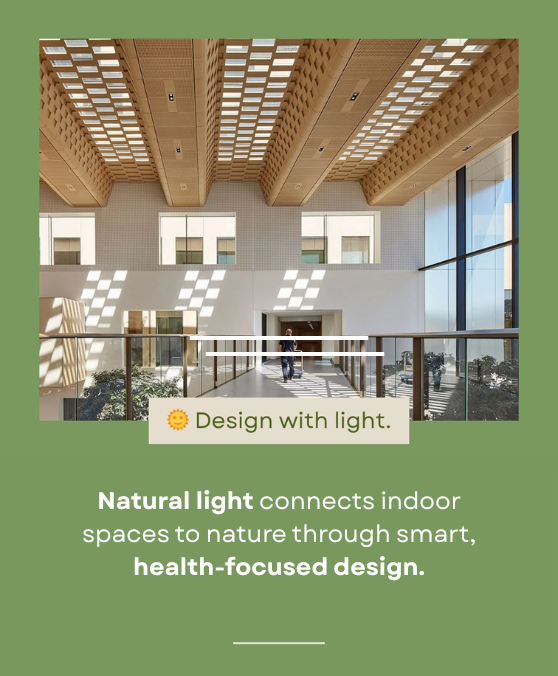
In the world of biophilic products, natural light plays a starring role. Think skylights that flood interiors with daylight, circadian lighting systems that mimic the sun’s path, or even smart glass that tints based on sun exposure. These innovations are more than just cool techthey’re bridges connecting our indoor lives with the natural world.
Want a healthier home or workspace? Start by asking: How can I maximize natural light here? Can I swap heavy curtains for sheer ones? Add mirrors to reflect light deeper into a room? Or maybe install a skylight or solar tube? These are simple yet powerful ways to infuse your space with the energy of the sun.
Real-life examples: how natural light transforms spaces

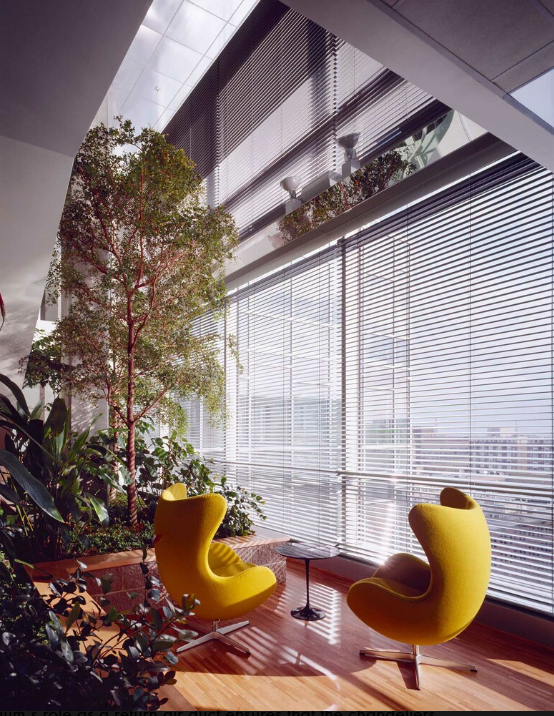
The Genzyme Center in Cambridge
Let’s look at some real-world examples. The Genzyme Center in Cambridge, Massachusetts, is a leading case study. This LEED Platinum-certified building features an interior designed around natural light, with a central atrium, glass walls, and reflective surfaces that distribute daylight throughout the space. The result? Employees report higher job satisfaction, reduced stress, and improved creativity.
Another standout is The Edge in Amsterdam, known as one of the greenest and smartest office buildings in the world. Its design maximizes daylight through floor-to-ceiling glass walls and dynamic lighting systems that adjust according to natural light levels, reducing energy use while enhancing occupant comfort.
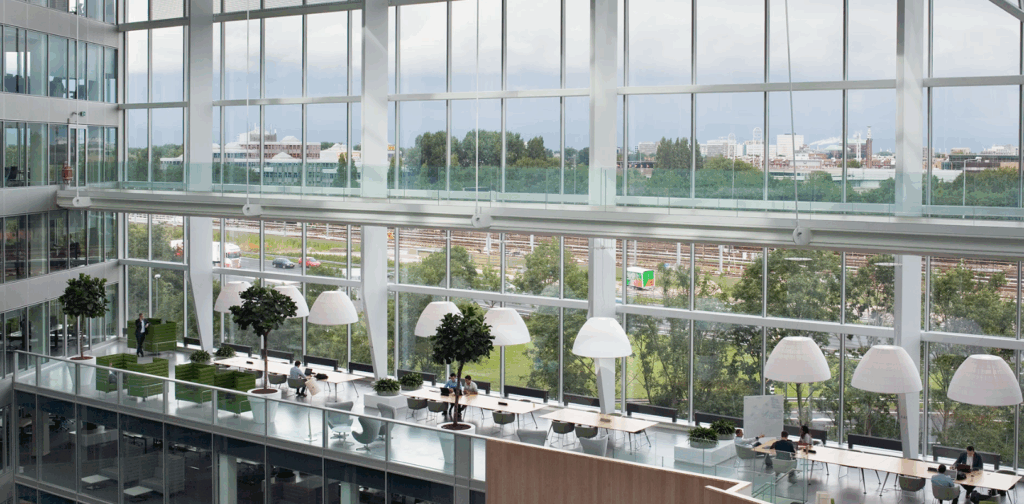
Then there’s the Google Bay View Campus in California, where biophilic design, natural light, and sustainable materials blend to create a workspace that supports well-being and collaboration.
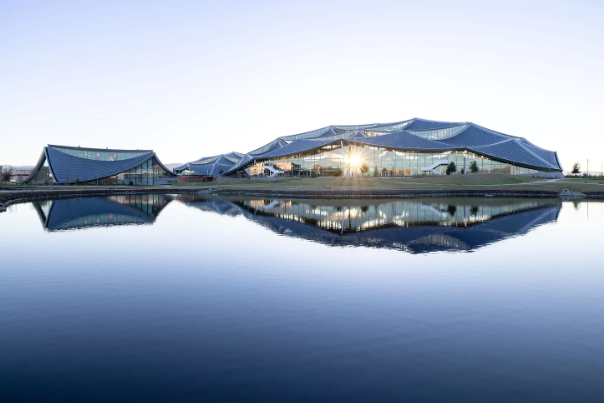
Google Bay View Campus in California – Photo Big and Google/Press
These projects showcase how natural light, when integrated thoughtfully into interior design, elevates spaces and transforms the user experience.
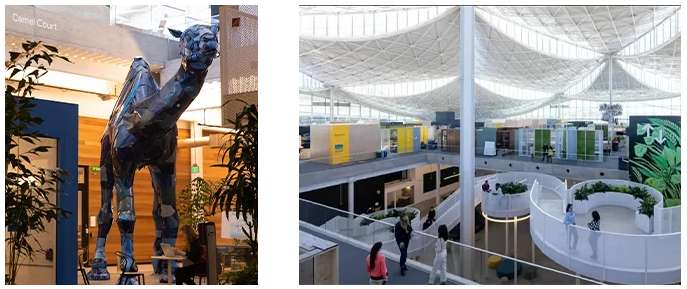
Natural light and the future of design
Here’s the thing: biophilic design isn’t a trend. It’s the future. As we continue to urbanize, bringing natural light into our built environments will only become more crucial. Architects and designers are rethinking buildings—not as concrete boxes, but as living ecosystems that support circadian health, reduce stress, and foster creativity.
From workplaces to hospitals, schools to homes, we’re seeing a shift toward healthy spaces—and natural light is leading the charge. It’s the original wellness tool that’s been with us since the dawn of time, and it’s finally getting the spotlight it deserves.
If you’re looking to improve your well-being, start with natural light. It’s free, it’s powerful, and it works wonders. Whether you’re planning a home renovation or reimagining your workspace, make natural light your design hero. Your body—and your mind—will thank you.
Embrace the sun. Let it in. And watch how your space, and your life, transforms.
Frequently asked questions about natural light
What is natural light, and why is it so important?
Natural light is sunlight that enters a space without using artificial lighting. It’s crucial for our physical and mental health, as it helps regulate our circadian rhythm, improves sleep, boosts mood, and increases productivity.
How does natural light impact circadian health?
Natural light acts as a natural cue for our body clock—our circadian rhythm—guiding when we feel alert and when we wind down for rest. Exposure to natural light during the day keeps us in sync, promoting better sleep patterns, mental clarity, and overall well-being.
What are the benefits of using natural light in workspaces?
Natural light in the workplace improves productivity, creativity, and mood. It reduces stress, enhances job satisfaction, and fosters a stronger sense of connection to nature, leading to a healthier work environment.
What are some biophilic products that use natural light?
Biophilic products that harness natural light include skylights, circadian lighting systems that adjust to the time of day, smart glass that adapts its transparency, and architectural elements like solar tubes and large windows strategically placed to maximize sunlight.
How can I increase natural light in my home or office?
You can boost natural light by using sheer curtains, placing mirrors to reflect sunlight, choosing light-colored wall paints, installing skylights or solar tubes, and rearranging furniture to avoid blocking windows. It’s all about creating a flow for the light to spread!



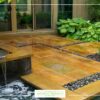





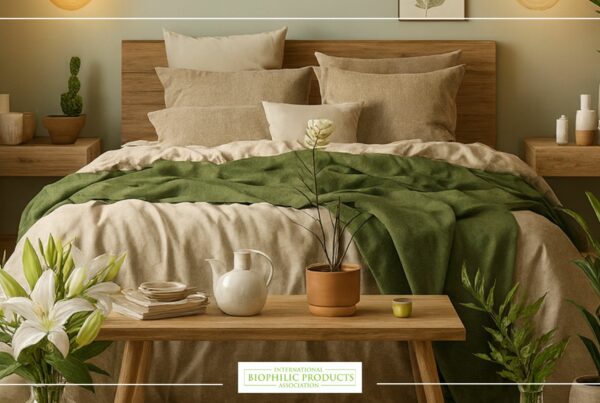

13 Comments